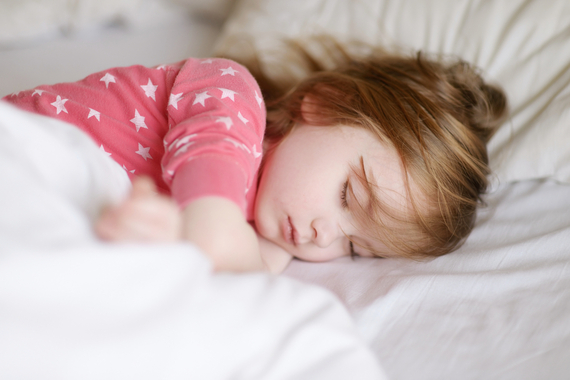 Don’t underestimate the power of the bedtime routine. Sleep is a big separation and you want your child to feel safe and secure as they are drifting off. Spending an exclusive 20-30 minutes of your time, relaxing them for sleep, will help to bridge this gap and actually can be a time that both the child and the parent can look forward to. Everything that you do during your routine should be in a dim environment which will help to enhance production of the sleep hormone melatonin. Quiet, non-stimulating activity, with plenty of eye and physical contact will help to regulate the heart-beat and increase production of the relaxing chemical oxytocin and all these efforts together, this will help ease your young child into healthy sleep.
Don’t underestimate the power of the bedtime routine. Sleep is a big separation and you want your child to feel safe and secure as they are drifting off. Spending an exclusive 20-30 minutes of your time, relaxing them for sleep, will help to bridge this gap and actually can be a time that both the child and the parent can look forward to. Everything that you do during your routine should be in a dim environment which will help to enhance production of the sleep hormone melatonin. Quiet, non-stimulating activity, with plenty of eye and physical contact will help to regulate the heart-beat and increase production of the relaxing chemical oxytocin and all these efforts together, this will help ease your young child into healthy sleep.
10 Steps to the perfect bedtime routine:
- Quiet the house an hour before bedtime. Dim the lights, turn off the television and spend some one to one time with your child.
- Ideally, finish any feeds downstairs/in the living room so that you don’t ingrain a feeding and sleeping association.
- Consider including a soothing bath to round off the day. In the absence of the bath, do a quick face wash and teeth brushing and then go to your child’s bedroom for the rest of the bedtime sequence.
- In the bedroom dim the lights, pull the curtains and consider using white noise on in the back ground, at the volume of a shower to help regulate the heart-beat and relax your tot. Turn this off before they are asleep.
- Consider some baby massage or some relaxing exercises for an older child.
- Get your child ready for bed: change the nappy, put on the pyjamas and into their sleeping bag if you use one. Sleeping bags are a great sleep aid-they help to avoid your child being too hot or too cold if they are inclined to kick off the blankets and they are also a great sleep cue “this is my costume for sleep”. I would also use these for naps.
- Whilst getting your baby ready for bed, sing a particular song and say the same words over, so that they can learn the words that you say before lights out “sleep time now Harry, it’s night night….”
- Do some quiet reading or story-time with your child, encourage them to look at the pictures, modulate your voice so that they are less inclined to want to eat the book…it’s not the words, but sometimes the melodic way that you say them. This quiet non-stimulating time, with plenty of contact can switch them from alert to sleepy.
- In the early days, your routine may be quite short 10-15 minutes in duration, but within the second half of the first year, you may need to provide 20-30minutes of a wind-down. Build a process that you can add to as your child grows up.
- Have an end to your routine, a certain phrase that you use or turning off of the lights or an “I love you” ritual that signals the end of the routine and the start of your child needing to go off to sleep
Lucy Wolfe, CGSC, MAPSC, is a paediatric sleep consultant and mum of four young children. She runs a private sleep consulting practice where she provides knowledge, expertise and valuable support to families across the country. See www.sleepmatters.ie <http://www.sleepmatters.ie>, t: 087 2683584 or e: lucy@sleepmatters.ie








